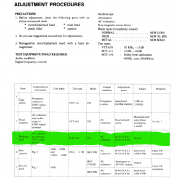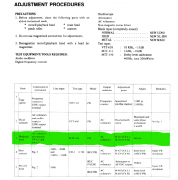Searching the internet I've found this:

It is a part from some Onkyo deck service manual. That MTT-150 test tape is a Teac and is ANSI, which means that 245mV is correct. Since that datasheet for a CX20187 can't be found, this is the way to collect the facts. Question remains, what is the reason that Matsushita have adjusted a Dolby level about 30mV lower which is about 12-13%? Not shore if a tolerance was 5mV or 5%, but in both cases a difference is too much. Hard to believe that some engineer have seen 215mV instead of 245 but what if ...? I mean, if somebody got a bad copy of that datasheet in a paper form, or maybe 215 and 245 sounds similar in Japanese, everything is possible, isn't it?


It is a part from some Onkyo deck service manual. That MTT-150 test tape is a Teac and is ANSI, which means that 245mV is correct. Since that datasheet for a CX20187 can't be found, this is the way to collect the facts. Question remains, what is the reason that Matsushita have adjusted a Dolby level about 30mV lower which is about 12-13%? Not shore if a tolerance was 5mV or 5%, but in both cases a difference is too much. Hard to believe that some engineer have seen 215mV instead of 245 but what if ...? I mean, if somebody got a bad copy of that datasheet in a paper form, or maybe 215 and 245 sounds similar in Japanese, everything is possible, isn't it?


